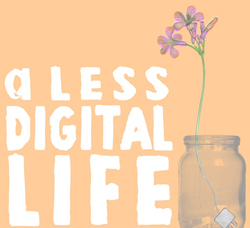The Drawbacks of Digital Advertising: What Really Works?
 From Media Tarzan
From Media Tarzan
August 5, 2014
There has been plenty written on the strengths and advantages of digital marketing during this “social media revolution.” But now that the concept has been around for a few years, some are starting to understand the weaknesses and disadvantages when compared to traditional advertising mediums like television, radio and print.
It turns out, digital advertising isn’t quite the panacea that many hoped it would be.
Digital Limits
First, consumers generally accept programming interruptions for advertising commercials on television, cable and radio — that’s the way the medium began, and as consumers, we’ve been conditioned to accept it.
This is not the case on digital platforms. Consumers don’t like to be interrupted with pop-ups, sliding banner ads or walk-ins while online playing games, socializing, researching or shopping. In fact, they hate it and do everything they can to avoid it. It’s hard to use the new digital mediums in the way you use traditional mediums to interrupt consumers to deliver your important advertising message.
Another challenge with digital is finding ways to reach a sizeable mass of consumers at one time, because it is very fragmented. One has to combine a large number of different applications to create any sizeable audience. Even when you do, these combined audiences don’t even scratch the surface of the viewing audience of your local television station or listeners of your favorite radio station.
Where Traditional Media Still Reigns
Traditional advertising mediums represent ocean-like mass audiences. Digital advertising mediums represent backyard man-made-lake-sized audiences by comparison. Traditional mediums still trump digital mediums when it comes to delivering mass groups of consumers.
Secondly, traditional media have been around awhile, so figuring out how to maximize them is not difficult. However, working with digital mediums isn’t easy. Frankly, it’s hard, confusing, and most people are spending lots of time and money trying to figure it out. Worst yet, it’s changing everyday. Many are learning it requires a certain level of expertise to do it right. It also takes a tremendous amount of time and energy. It creates high levels of frustration, and many are still waiting on that return on investment that continues to elude most.
Emotional Connections
The digital platform is great to educate and perform research. But, when it comes to reaching a mass audience with a compelling and emotional story about your store, products or services, the traditional advertising mediums of radio and television win hands down. Digital may do a great job demonstrating facts, figures, data and text, but it’s not a very emotional platform. You simply can’t connect emotionally with a potential customer the way you can via telling stories on TV and radio.
With all the changes to technology, the one thing still remains the same: Facts tell. Stories sell.



Leave a Reply
Want to join the discussion?Feel free to contribute!